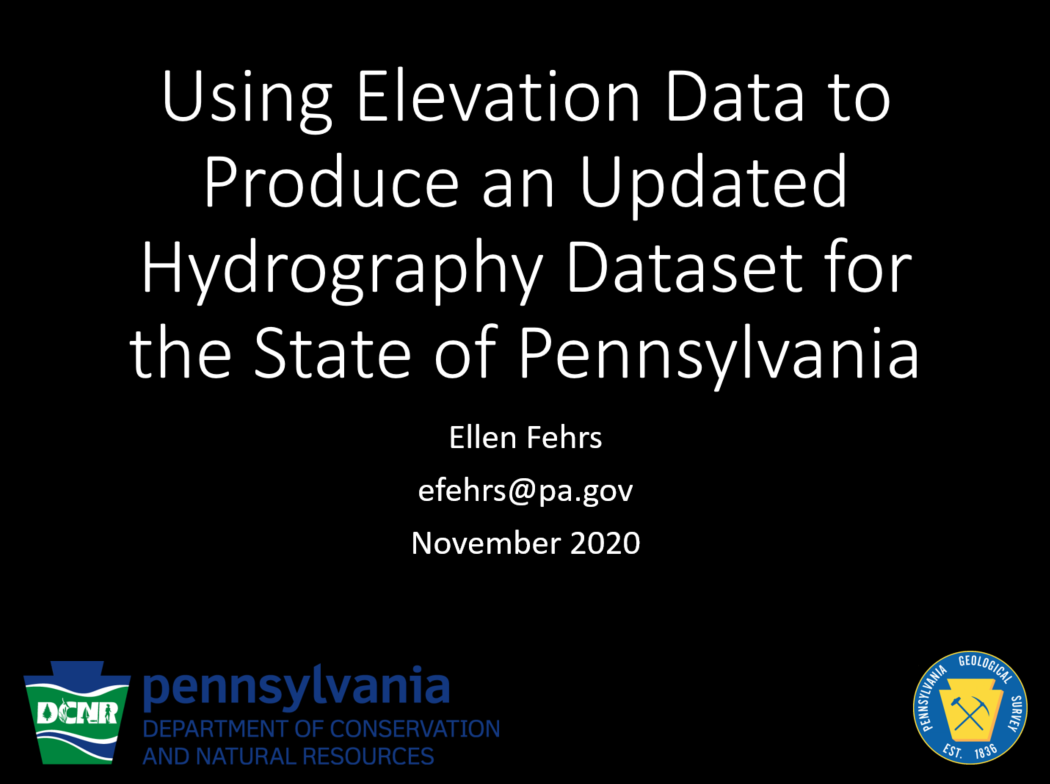Author:
Ellen FehrsCo-Authors:
Institution:
Department of Conservation and Natural Resources, Bureau of Geological SurveyAbstract
The Pennsylvania Department of Conservation and Natural Resources (DCNR) Bureau of Geological Survey (BGS) has compiled a comprehensive workflow that will be used to generate hydrography data for the new elevation-derived Pennsylvania Hydrography Dataset (PAHD). This workflow relies primarily on geomorphon classification of (QL Level 2) lidar-derived elevation data as a means of identifying potential flowpath geometries which are subsequently winnowed to remove artifacts and other irrelevant features. The geomorphon areas that remain are further processed to create a vector flowpath network. Final steps in the workflow assign attributes, some from the NHD, others by running specific tools. The end goal is a scale-equivalent and dynamic hydrography dataset for the state of Pennsylvania, created using derivatives created from quality level (QL) 2 Light Detection and Ranging (Lidar) elevation data. For the purposes of this project, “scale-equivalent” is defined as horizontal accuracy to one meter and vertical accuracy to half a meter at a 1:2,400 scale with reference to the most current elevation data. This presentation briefly examines the major components of the most current methodology for producing flowpath geometries.
